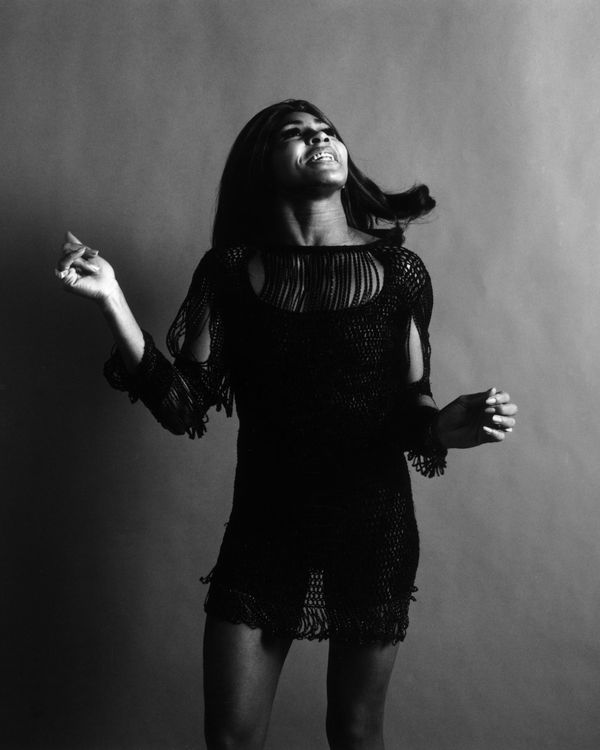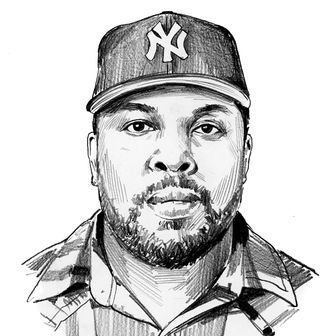
This article was featured in One Great Story, New York’s reading recommendation newsletter. Sign up here to get it nightly.
In the late ’70s, Tina Turner was dropped from her record label after two consecutive solo albums tanked. Following a protracted, acrimonious divorce from Ike — her husband, musical collaborator, and tormentor — she preened and growled through a blistering cover of Elton John’s “The Bitch Is Back”; if you lived in the United States, you might’ve missed it unless you’d caught one of her simmering cabaret shows or picked up 1978’s Rough. A decade earlier, Tina taught Mick Jagger his moves and was recruited to open for the Rolling Stones, while Janis Joplin sang the Tennessee legend’s praises to Dick Cavett. By ’79, Tina had made appearances in the Stones’ Gimme Shelter documentary, the Who’s silver-screen adaptation of Tommy, and the Bee Gees’ Sgt. Pepper film. But United Artists (before it got devoured by EMI) refused to schedule a U.S. release for her next album, Love Explosion, a grab bag of expertly sung if overproduced funk, soul, and disco tracks. Money was tight, bookings were thinning out, and Tina was making unglamorous, unpopular plays to keep from fading into obscurity, like performing in Vegas or in South Africa during apartheid. She had given up a great deal in the divorce to free herself from a pattern of abuse and manipulation. Now, she had children to feed and songs to sing.
Tina Turner’s early solo albums were attempts to find the pulse of modern American music. 1974’s Tina Turns the Country On! tapped into her love of roots and folk music, while 1975’s Acid Queen — stuffed with vibrant readings of the Stones, the Who, and Led Zeppelin — was a reminder of her impact on rock and roll, with raw, piercing vocals and fleet dance routines that impressed the blues obsessives of the British invasion nearly ten years earlier. Rough and Love Explosion made adjustments for the impact of disco, just as old friends like the Stones and Rod Stewart did in 1978 with “Miss You” and “D’Ya Think I’m Sexy?” While the stars of the ’60s rock revolution were celebrated for navigating the dizzying evolution of popular music across the ’70s Tina fought off the impression that her career was in its twilight. (Some of that is owed to her ex’s machinations; the Ike originals on the back end of Acid Queen pull against the electric performances on the front end. Tina also felt that their musical collaboration had been defined by his creative limitations. “He wanted to be a star,” she wrote in the 2018 autobiography My Love Story, “but the only way he could do it was through me.”) She spent the next five years convincing industry insiders of the soul power and sensuality still evident in her voice and live sets — attendees at her shows were swept up in a dirty-blonde tornado — and collecting the right tunes to prove that the singer people felt was finished hadn’t even reached her peak.
It took the auditory wanderlust of 1984’s Private Dancer for a label to start betting on Tina again. In 1980, she had met Roger Davies, who managed Olivia Newton-John through Physical and Xanadu, while taping a killer version of the Eagles’ “Heartache Tonight” for Newton-John’s ABC special Hollywood Nights. With Davies, she hunted for collaborators, netting a ragtag group: Graham Lyle of the Scottish folk duo Gallagher and Lyle; Australian rocker and producer Terry Britten, whose co-writes include the Thriller outtake “She’s Trouble”; Holly Knight, who co-wrote Pat Benatar’s “Love Is a Battlefield” and Patty Smyth’s “The Warrior”; London producer Rupert Hine, in between gigs producing for New Zealand New Wave band the Fixx and synth-pop stars Howard Jones and the Thompson Twins; and Martyn Ware of the Human League and Heaven 17, whose British Electric Foundation project tapped Tina in 1982 for a cover of the Temptations’ political screed “Ball of Confusion.” (The story of the meeting between Turner and Ware, recounted in the 1986 autobiography I, Tina: My Life Story, is a blast. “Where’s the rhythm section?” the singer asked the producer, who immediately pointed to a computer.)
Straining for a hit to get her back in the game, Tina delivered an album that bridged her rock-and-roll past with the brash funk, rock, and electronic music on the horizon, settling comfortably at the intersection of interests and sounds that would dominate pop radio in the ’80s. Smoothing the wild ride from the robot country-pop tune “Show Some Respect,” the machine-like groove of “I Can’t Stand the Rain,” the smooth soul of her “Let’s Stay Together,” the punk-pop fury of “Steel Claw,” and the adult-contemporary title track (a gift from Dire Straits front man Mark Knopfler) was Tina’s voice. A world-class interpreter — with an underrated pen, as the success of “Nutbush City Limits,” the most successful song with the Revue, proved — Turner crawled down into the cracks of a song, shouting, whirling, and bellowing her way through terse character studies while slicing through the mix like a hot knife. She had done it all her life; in My Love Story, Turner remembered impressing Knoxville sales clerks with songs she memorized off the radio as a 4-year-old.
But as “Let’s Stay Together” popped overseas, Davies had to petition Capitol Records, which put out Private Dancer, to give the track a push in America and to back “What’s Love Got to Do With It?” on radio. The single that would win Grammys for Record and Song of the Year in 1985 and the album that would sell 4 million units in America in the first 12 months were not considered sure bets by the executives who green-lit their release. Even after Tina bounced from rock bottom to the top of the Billboard Hot 100, she had to keep proving herself.
Though 1986’s Dancer follow-up Break Every Rule lived up to its name as it strutted confidently between the yearning R&B jam “Typical Male,” the country kiss-off “What You Get Is What You See,” and the prog-pop highlight “Girls” (written by Turner’s friend David Bowie and featuring Phil Collins on drums), the album and singles didn’t see the same sales traction as the previous cycle (nor did “We Don’t Need Another Hero,” the hit from the soundtrack to Mad Max Beyond Thunderdome). 1989’s Foreign Affair — home to the R&B gem “Falling Like Rain” and the new jack swing song “You Can’t Stop Me Loving You” but also “The Best,” a smash Knight wrote for Welsh singer Bonnie Tyler — sold less here than Break Every Rule. The 1990 European tour in support of Foreign Affair was an odd enterprise, a first stadium trek billed prematurely as a farewell. Turner figured she would get off the road and then see how far her movie-industry aspirations could take her.
By then, she was an international superstar. But her home country was still finicky with her (in 1966, “River Deep — Mountain High” blew up in Europe before the States took notice), a perplexing state of affairs until you square it with the stories of other Black women who pioneered a blend of rock, pop, gospel, and soul. Sister Rosetta Tharpe, Tina’s idol, influenced a generation of British rockers who worshiped her guitar chops and later found themselves in the peculiar position of offering television exposure to the person who inspired them, just as Rod Stewart and David Bowie used their connections to help jump-start Turner’s own second act. Nina Simone found comfort decamping to Switzerland as Tina did in the ’90s, when she got out of the States to take up permanent residence where the most enthusiastic buying audience rested.
Tina Turner was a tenacious Black mother and survivor entering her 40s and rebuilding her life in the late ’70s, and people didn’t mind underestimating her, even as she methodically set about making them all very rich. (It’s hard to understand whether she could’ve been more vocal about social justice issues while she was in a controlling business and romantic relationship with a man who abused her. It’s dicey to beckon Black expats back to the specific flavors of discrimination that they left at home.) The off-peak albums had their issues — too much filler, too many ballads, a too-eager disco pivot — but the air of disposability that hung over the fallow years of her career, when she was being cast aside as a dated artifact of the ’60s, doesn’t match the patience that’s extended to men who enter a “difficult period” where they try too much or don’t sell enough or chase an unmarketable interest to an expensive misfire or fall apart and lose the plot. Men hit a rough patch, and everyone waits for them to figure themselves out again, understanding that nobody knows where their ceiling is. As we remember the unquenchable fire of Tina Turner — in song, in trauma, onstage, and in film — let’s never forget how many people didn’t seem to mind letting the embers cool when a little care and grace and space was required.


